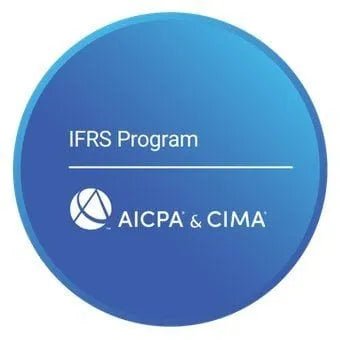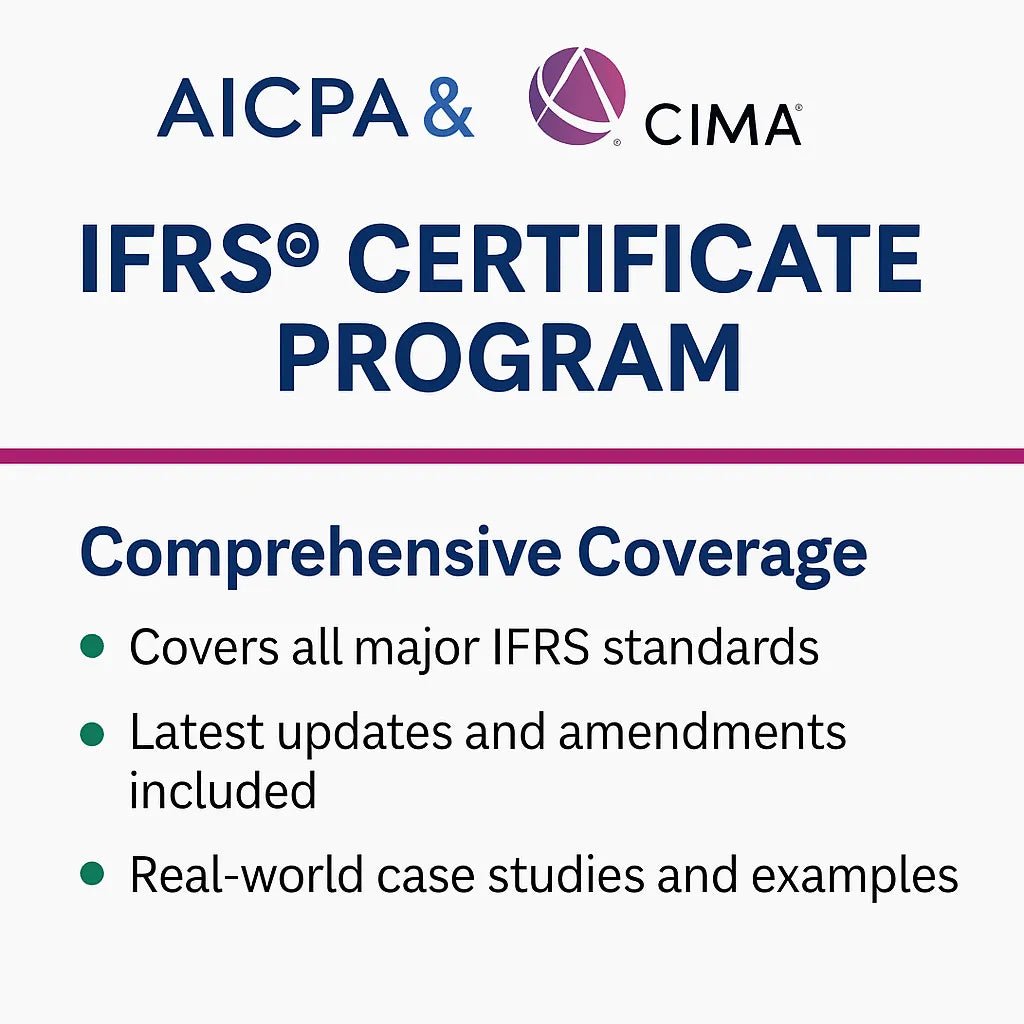ACCA AFM Professional Skills: Master Communication
4 Essential ACCA AFM Professional Skills Every Student Must Master
ACCA AFM professional skills determine the difference between technical competence and professional excellence in Advanced Financial Management. Recent examiner reports reveal that while students demonstrate solid calculation abilities, they consistently struggle with the
four essential ACCA AFM professional skills: communication, analysis and evaluation, scepticism, and commercial acumen - skills that are critical for examination success and senior financial management roles.Understanding why these professional competencies matter within the broader ACCA qualification framework emphasizes AFM's role in developing strategic business leaders capable of making complex financial decisions and communicating effectively with stakeholders.
ACCA AFM Professional Skills Overview: Why They Matter
Advanced Financial Management allocates significant marks to professional skills assessment - 10 marks in Section A and five marks in each Section B question. This emphasis reflects the reality that senior financial roles require sophisticated communication, analytical thinking, and commercial judgment alongside technical expertise.
The examiner consistently notes that candidates who master technical calculations but neglect professional skills development achieve mediocre overall performance. Conversely, students who consistently integrate professional competencies throughout their responses tend to achieve higher grades, even when the technical content contains minor errors.
For comprehensive guidance on overall AFM success strategies, including professional skills integration, see our detailed guide on how to pass the ACCA AFM exam.
ACCA AFM Professional Skill #1: Communication Excellence
What AFM Communication Demands:
Advanced Financial Management requires executive-level communication skills appropriate for board presentations and senior stakeholder reports. Effective communication extends far beyond basic report formatting to encompass strategic narrative construction and presentation tailored to decision-makers.
Essential Communication Components:
Report Structure Mastery:
- Executive Summary: Lead with clear, actionable recommendations supported by quantified analysis
- Technical Integration: Seamlessly weave complex calculations into narrative flow without overwhelming non-technical readers
- Professional Language: Use appropriate business terminology while avoiding excessive jargon
- Logical Flow: Structure arguments progressively from analysis to insights to recommendations
Examiner Expectations: "The communication marks are largely earned by the format and style of the report and for using a style and language which creates a clear, well-presented report with a suitable tone."
Advanced Techniques:
- Connect technical results to business implications throughout discussions
- Use visual presentation methods (tables, clear headings) to enhance readability
- Present complex information in accessible formats for executive audiences
- Maintain a professional tone appropriate for board-level decision makers
Common Communication Failures: Many students lose marks through basic structural oversights that comprehensive preparation can easily prevent. Understanding these patterns, as detailed in our analysis of the top 10 ACCA AFM mistakes, helps students avoid predictable communication errors.
ACCA AFM Professional Skill #2: Analysis and Evaluation Mastery
Strategic Financial Analysis:
Analysis and evaluation skills demonstrate the ability to extract meaningful business insights from technical calculations and present them within broader strategic contexts.
Core Analytical Competencies:
Comparative Analysis Excellence:
- Benchmarking: Compare results against industry standards and competitor performance metrics
- Scenario Modeling: Evaluate multiple outcomes under different assumption sets
- Trade-off Assessment: Analyze competing strategic options with quantified impact analysis
- Timing Considerations: Factor implementation sequences and market timing into recommendations
Integration with Technical Content: Professional analysis moves beyond calculation presentation to meaningful interpretation that supports strategic decision-making.
Examiner Insight: "Analysis and evaluation marks are awarded for clear, efficient, and effective numerical analysis. Generally, technically proficient candidates are better able to earn these marks."
Advanced Application Examples:
Investment Appraisal Analysis: Instead of simply presenting NPV calculations, evaluate:
- Sensitivity of results to key assumption changes
- Comparison with alternative investment opportunities
- Strategic fit with corporate objectives and capabilities
- Implementation resource requirements and organizational readiness
Merger Analysis Enhancement: Beyond synergy calculations, analyze:
- Cultural integration challenges and success factors
- Regulatory approval likelihood and timeline implications
- Competitive response scenarios and market dynamics
- Stakeholder impact distribution and management strategies
Professional Skill #3: Scepticism and Critical Thinking
Professional Skepticism Development:
Scepticism represents the most sophisticated AFM professional skill, requiring candidates to challenge information constructively, question underlying assumptions, and identify potential implementation problems.
Critical Thinking Framework:
Assumption Challenge Techniques:
- Forecast Reliability: Question the basis and achievability of financial projections
- Growth Rate Assumptions: Assess reasonableness of perpetual growth expectations
- Synergy Projections: Challenge the likelihood of achieving projected merger benefits
- Market Condition Stability: Consider external factors that could affect outcomes
Examiner Feedback: "To demonstrate the skill of scepticism, candidates were expected to adopt a questioning approach to the information provided in a way that would impact the decisions."
Risk Identification Methods: Professional scepticism identifies potential unintended consequences and implementation challenges:
- Implementation Risks: Resource constraints, timeline pressures, capability gaps
- External Dependencies: Regulatory changes, market shifts, competitor responses
- Assumption Sensitivity: Impact of key variable changes on strategic outcomes
- Stakeholder Resistance: Political and organizational obstacles to implementation
Practical Scepticism Examples:
Currency Hedging Analysis: Question whether:
- Forecast exchange rates based on purchasing power parity will hold
- Basis risk assumptions in futures contracts remain valid
- Transaction exposure estimates accurately reflect actual business flows
- Counterparty creditworthiness supports derivative contract reliability
Investment Project Assessment: Challenge assumptions about:
- Market demand sustainability for projected cash flows
- Competitive response scenarios and market share protection
- Technology obsolescence risks in long-term projects
- Resource availability and cost escalation factors
Professional Skill #4: Commercial Acumen Excellence
Real-World Business Understanding:
Commercial acumen demonstrates a sophisticated understanding of business environments beyond theoretical financial models. This skill consistently challenges AFM students who focus primarily on technical calculations without a broader business context.
Commercial Awareness Development:
Industry Context Integration:
- Sector Dynamics: Understand specific industry challenges and opportunities affecting scenario companies
- Competitive Landscape: Analyze market positioning implications of financial decisions
- Regulatory Environment: Consider compliance requirements and regulatory risk factors
- Economic Context: Factor macroeconomic trends into strategic analysis
Stakeholder Impact Assessment: Professional commercial acumen evaluates decisions from multiple perspectives:
- Shareholder Value: Long-term wealth creation versus short-term performance impacts
- Creditor Interests: Debt capacity, covenant compliance, and credit rating implications
- Employee Considerations: Job security, career development, and cultural change impacts
- Regulatory Concerns: Competition policy, consumer protection, and systemic risk factors
Examiner Guidance: "To demonstrate commercial acumen, candidates need to use the information from the scenario or the real world to enhance their discussion."
Advanced Commercial Application:
Merger Transaction Analysis: Consider broader business implications:
- Market Concentration: Regulatory approval challenges and required divestments
- Cultural Integration: Management philosophy alignment and integration success factors
- Competitive Positioning: Market share implications and competitive response strategies
- Stakeholder Management: Communication strategies for different interest groups
Risk Management Context: Evaluate hedging decisions within business reality:
- Operational Constraints: Cash flow timing and business cycle considerations
- Strategic Flexibility: Impact of hedging decisions on future strategic options
- Cost-Benefit Analysis: Hedging costs versus risk tolerance and capital adequacy
- Implementation Complexity: Organizational capability requirements and system integration needs
Professional Skills Integration Strategies
Natural Integration Versus Artificial Addition
Seamless Demonstration Approach:
The most successful AFM responses integrate professional skills naturally throughout technical analysis rather than creating separate skills sections.
Integration Techniques:
Within Technical Calculations:
- Explain methodological choices and business rationale during calculations
- Acknowledge limitations and assumptions while performing analysis
- Compare alternative approaches and their strategic appropriateness
- Connect numerical results to business implications throughout the work
Throughout Discussion Elements:
- Challenge given information while exploring alternative scenarios
- Relate analysis to industry trends and market dynamics
- Consider multiple stakeholder perspectives in recommendation development
- Address implementation challenges and risk mitigation requirements
Professional Skills Assessment Understanding
Examiner Evaluation Criteria:
The AFM professional skills assessment focuses on demonstrating quality rather than declaring skills. Students cannot simply state that they are showing skepticism; they must demonstrate critical thinking through an analytical approach and a depth of discussion.
Quality Indicators:
- Depth of Analysis: Moving beyond surface-level observations to strategic insights
- Context Integration: Connecting technical analysis to broader business environments
- Stakeholder Awareness: Considering multiple perspectives and impact distributions
- Critical Evaluation: Questioning assumptions and identifying implementation challenges
Advanced Professional Skills Development
Building Commercial Awareness Through Practice
Real-World Engagement Strategies:
- Financial Press: Regular reading of business publications and transaction announcements
- Company Analysis: Study annual reports and strategic communications from major corporations
- Industry Research: Follow sector trends and regulatory developments affecting different markets
- Transaction Analysis: Analyze major M&A deals and corporate restructuring announcements
Application in AFM Context: Connect scenario companies to real industry examples, relate calculations to actual business decision-making processes, and assess stakeholder management implications throughout analysis.
Structured Professional Development
Comprehensive Skills Building:
For systematic professional skills development alongside technical mastery, structured AFM coaching programs provide integrated training with expert feedback on both technical accuracy and professional competency demonstration.
Self-Directed Enhancement:
- Practice explaining complex financial concepts to non-technical audiences
- Develop systematic questioning frameworks for assumption evaluation
- Build templates for stakeholder impact analysis across different scenarios
- Create professional communication frameworks that function under time pressure
Professional Skills in Examination Context
Section A Professional Skills Strategy (10 Marks)
Comprehensive Integration Approach:
Section A's 10 professional skills marks require demonstration across multiple requirement areas rather than concentration in a single section.
Strategic Distribution:
- Communication (3-4 marks): Report structure, presentation quality, and professional language
- Analysis and Evaluation (3-4 marks): Insight depth, comparative analysis, and strategic integration
- Scepticism (1-2 marks): Assumption challenging and risk identification throughout
- Commercial Acumen (1-2 marks): Real-world context integration and stakeholder awareness
Integration Throughout Response: Weave professional skills naturally into technical requirements rather than creating separate skills demonstrations at the end of responses.
Section B Professional Skills Focus (5 Marks Per Question)
Targeted Demonstration Strategy:
Each Section B question concentrates on five professional skills marks in 2-3 specific skill areas. Identify the primary skills being assessed and demonstrate them consistently throughout the responses.
Quality Over Quantity Principle: Focus on deep demonstration of highlighted skills rather than surface-level attempts across all competencies. Consistent, high-quality demonstration typically outperforms shallow attempts across multiple areas.
Long-Term Professional Competence Building
Career Application Beyond Examinations
Strategic Professional Development:
AFM professional skills transfer directly to senior financial management responsibilities across investment banking, corporate development, treasury management, and financial consulting roles.
Competency Transfer:
- Communication: Client presentation skills and board reporting capabilities
- Analysis: Strategic decision-making frameworks and risk assessment methodologies
- Scepticism: Due diligence capabilities and risk management disciplines
- Commercial Acumen: Market analysis skills and stakeholder management expertise
Professional Skills Maintenance and Growth
Continuous Development Pathway:
Professional competency development continues throughout financial careers. AFM offers a structured introduction to capabilities that require ongoing refinement through practical application and professional experience.
Foundation Building Strategy: Use AFM preparation as an opportunity to develop professional habits and analytical frameworks that serve long-term career advancement rather than just examination success.
Advanced Integration Techniques
Professional Skills Synergy
Combining Multiple Skills Effectively:
The highest-performing AFM responses demonstrate multiple professional skills simultaneously rather than addressing them separately.
Synergistic Examples:
- Sceptical Analysis: Question assumptions while performing comparative analysis across multiple scenarios
- Commercial Communication: Present stakeholder impact analysis using appropriate business language and executive summary formats
- Critical Evaluation: Challenge given information while demonstrating industry knowledge and market awareness
Technology and Professional Skills
Digital Communication Excellence:
Modern financial professionals must excel at digital communication and virtual presentation. AFM preparation should include technology-enhanced communication practice alongside traditional report writing skills.
Professional Presentation Standards:
- Clear spreadsheet organization with professional labeling and formatting
- Integrated text and numerical presentation for executive audiences
- Efficient use of analytical tools to support decision-making processes
- Digital collaboration skills for complex financial analysis projects
Conclusion: Professional Excellence in Advanced Financial Management
These four essential ACCA AFM professional skills—communication, analysis and evaluation, scepticism, and commercial acumen—create the foundation for senior financial management effectiveness. Success requires the systematic development of all competencies through integrated practice, rather than treating them as afterthoughts in examinations.
Students who approach professional skills strategically, alongside technical preparation, position themselves for both examination success and long-term career advancement in challenging financial roles. The investment in comprehensive professional development creates analytical frameworks, communication capabilities, and commercial understanding that distinguish senior financial professionals throughout their careers.
Transform your AFM preparation by integrating professional skills development from the beginning rather than adding it at the end. This approach builds authentic competency that serves both examination performance and professional effectiveness in complex business environments.
Other popular AFM blogs
FAQs
ACCA blogs
Follow these links to help you prepare for the ACCA exams
IFRS blogs
Follow these blogs to stay updated on IFRS
Formats
Use these formats for day to day operations
- Account closure format
- Insurance claim letter format
- Transfer certification application format
- Resignation acceptance letter format
- School leaving certificate format
- Letter of experience insurance
- Insurance cancellation letter format
- format for Thank you email after an interview
- application for teaching job
- ACCA PER examples
- Leave application for office
- Marketing manager cover letter
- Nursing job cover letter
- Leave letter to class teacher
- leave letter in hindi for fever
- Leave letter for stomach pain
- Leave application in hindi
- Relieving letter format
Interview questions
Link for blogs for various interview questions with answers
- Strategic interview questions
- Accounts payable interview questions
- IFRS interview questions
- CA Articleship interview questions
- AML and KYC interview questions
- Accounts receivable interview questions
- GST interview questions
- ESG Interview questions
- IFRS 17 interview questions
- Concentric Advisors interview questions
- Questions to ask at the end of an interview
- Business Analyst interview questions
- Interview outfits for women
- Why should we hire you question
leave application format
- Leave application for office
- Leave application for school
- Leave application for sick leave
- Leave application for marriage
- leave application for personal reasons
- Maternity leave application
- Leave application for sister marriage
- Casual leave application
- Leave application for 2 days
- Leave application for urgent work
- Application for sick leave to school
- One day leave application
- Half day leave application
- Leave application for fever
- Privilege leave
- Leave letter to school due to stomach pain
- How to write leave letter
Insurance blogs
- Sample letter of appeal for reconsideration of insurance claims
- How to increase insurance agent productivity
- UAE unemployment insurance
- Insurance cancellation letter
- Insurance claim letter format
- Insured closing letter formats
- ACORD cancellation form
- Provision for insurance claim
- Cricket insurance claim
- Insurance to protect lawsuits for business owners
- Certificate holder insurance
- does homeowners insurance cover mold
- sample letter asking for homeowner right to repair for insurance
- Does homeowners insurance cover roof leaks














Leave a comment